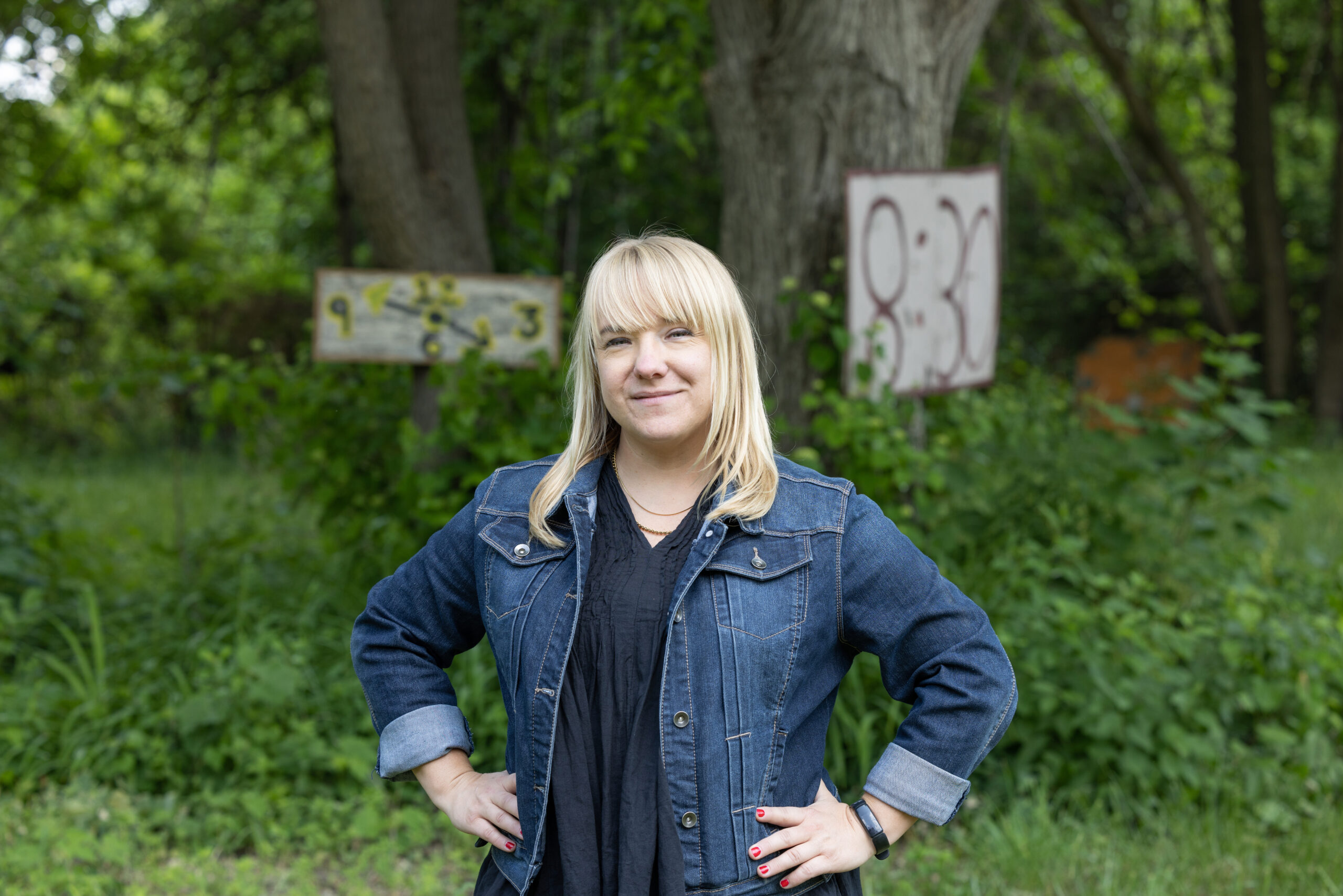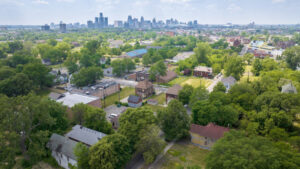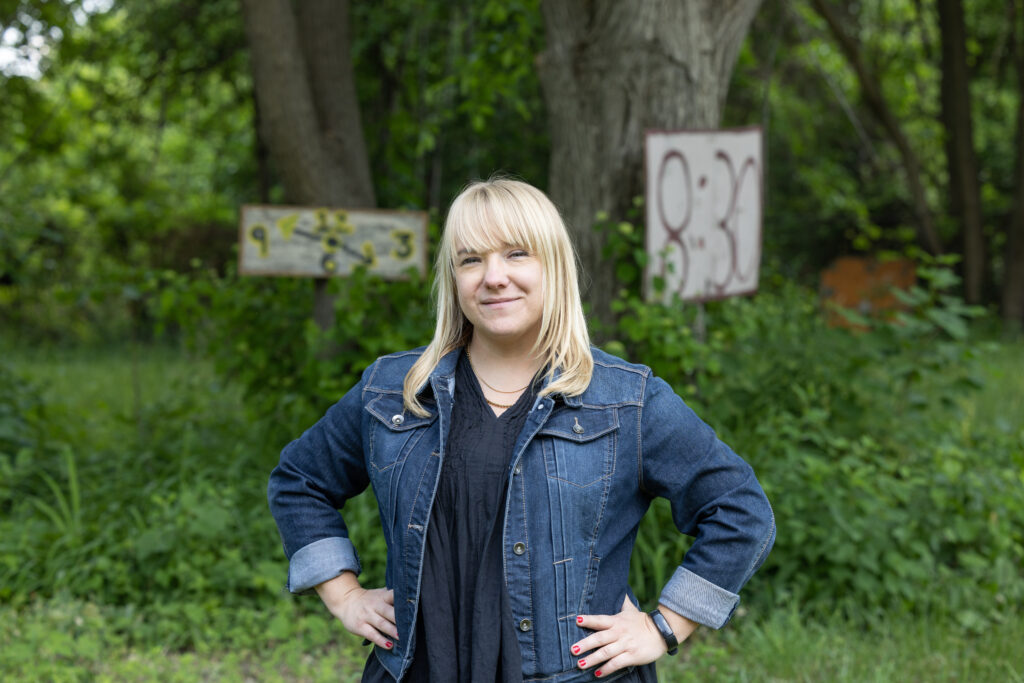Source: School of Environment and Sustainability

Lisa DuRussel on the land near the Heidelberg Project that will hold Detroit Land Lab “eco-literacy” programming, a collaboration between DuRussel and her students alongside Tanya Stephens of Detroit Vacant Land CDC

Lisa DuRussel on the land near the Heidelberg Project that will hold Detroit Land Lab “eco-literacy” programming, a collaboration between DuRussel and her students alongside Tanya Stephens of Detroit Vacant Land CDC
More Info
It has been a decade since Detroit’s historic bankruptcy, and although the signs of recovery are palpable throughout Downtown, Midtown, Corktown, New Center and the Riverfront—with clear signs of private investment and development—there exists a different reality when you leave these more central parts of the city.
An estimated 19 square miles of vacant land remain scattered throughout Detroit, representing unique opportunities and complex challenges. Who acquires this vacant land and how it is transformed holds the potential to empower communities to reinvent the future of Detroit, something that University of Michigan School for Environment and Sustainability Assistant Professor of Practice in Landscape Architecture Lisa DuRussel (BS ’02, MLA ’06), alongside her students and community collaborators, is passionate about ensuring.

An aerial view of the McDougall-Hunt neighborhood with Downtown Detroit in the background.
“We work closely with the residents of Detroit to make sure they have a say in what happens to this vacant land, and we don’t want our work to just sound great on paper, we want it to be what the community needs,” says DuRussel. “So, we really put a lot of focus on being present in the communities and listening carefully to residents so we can provide the right help.”
With her grassroots, ground-up approach, DuRussel believes strongly in forging relationships with local community members and leaders, and she has done just that since joining SEAS in 2020—building rapport by being present and putting power into the hands of the residents while leveraging U-M resources to support their visions. The trust she has built has allowed DuRussel to integrate her deep connections into the projects she designs for her students. She says that these projects tend to attract SEAS students who are interested in both community engagement and the questions surrounding the future of vacant land in Detroit.
Read more of the SEAS story.


